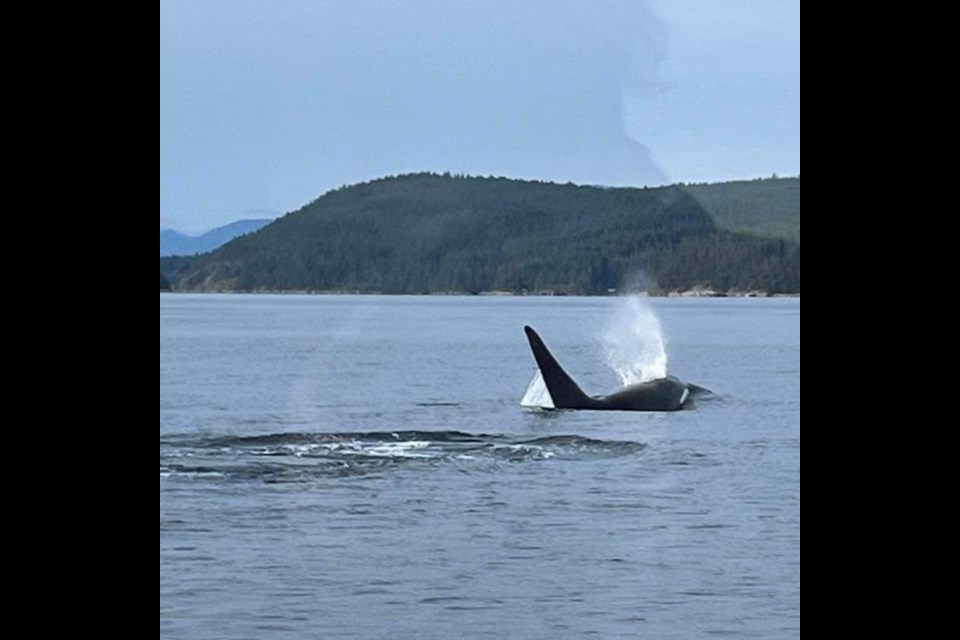While travelling to Savary Island over the weekend, Ann-Marie Delawsky was lucky enough to photograph an orca whale while taking a water taxi from Lund. According to Delawsky, she took the photograph of the whale at 4 pm on Friday, February 9, while heading to her home on Savary.
reported seeing orca whales in mid-January, and stated that: "Members of the northern resident orca have remained in the upper Georgia Strait, most notably around Powell River."
Resident orca eat fish and travel in larger pods, compared to the transient orca which eat marine mammals and travel in smaller pods.
Although transient orca have been reported, "they appeared in different waterways and do not overlap geographically with the resident orca," according to WOWs.
WOWs founder Susan MacKay said a report came in on Saturday regarding a pod of transient Bigg’s orca (T101) going northbound in qathet waters, but the one photographed last Friday could be either species.
“T101s are a family pod; pods are organized by the matriarch number given to enable following the family tree,” added MacKay. “That's why numbers and photos are needed for proper identification. Every nick, mark and white patches matter to identify correctly.”
The federal government and Department of Fisheries and Oceans (DFO) issued a statement to boaters about watching orcas in the wild, which will last until the end of May.
“Vessels must stay 400 metres away from all killer whales in southern BC coastal waters between Campbell River and just north of Ucluelet until May 31, 2024.”
For all other areas of BC outside of the area indicated above, a minimum distance of 200 metres must be maintained when viewing orca or any cetaceans that are resting or with a calf.
When viewing whales, dolphins and porpoises under other circumstances not described above, a minimum distance of 100 metres must be kept.
Join the for the top headlines right in your inbox Monday to Friday.


